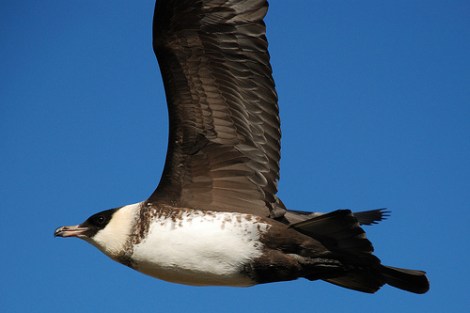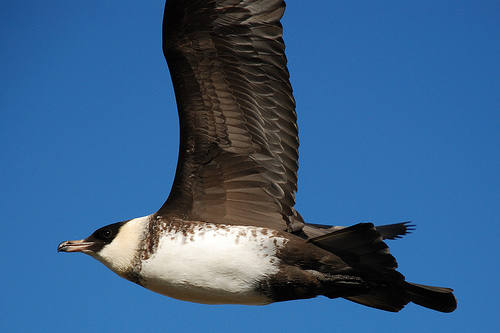We have mentioned previously the various diseases that climate change will likely make more robust or more common, or more robust and more common.

MarmotChaserA bird flies over the Alaskan tundra.
It’s not only humans who need to worry. A version of avian malaria has begun to infect birds in an unlikely place: Alaska.
Because mosquitoes transmit the disease, it tends to reside in warmer and wetter parts of the world, areas that are hospitable to these insects. However, migratory birds can carry versions of the Plasmodium parasite, which causes the disease, to new locales, creating test situations that could model how human malaria may behave under similar conditions.
What the scientists have found is that the parasite that infects migratory birds is now infecting local birds. Because the Arctic is the fastest-warming area in the world, Alaska amounts to a vast test tube that helps scientists see the health impacts of rapid change. …
With help from the Alaska Bird Observatory and the Bureau of Land Management, the researchers captured birds with mist nets and collected blood samples before letting the birds fly away. They tested birds at three locations and found malaria parasites as far north as Fairbanks, at a latitude of 64 degrees north. Out of 676 sampled birds, 7.2 percent were infected with one of seven varieties of Plasmodium.
Tropical diseases in Alaska! Great.
Since the disease is a newcomer to an existing ecosystem, its effects could be dramatic.
The new transmission cycle could be devastating, according to [Ryan Harrigan, a postdoctoral researcher at the Center for Tropical Research at the Institute for the Environment and Sustainability at the University of California, Los Angeles], because immunologically naive birds could suffer greatly from this infection. He cited malaria transmission in Hawaii, which drastically shrank bird populations after the disease emerged there. Isolated birds, like penguins, are especially vulnerable, and birds that survive infection often have a lower birth rate.
When asked for comment, the American Petroleum Institute suggested that Alaskan bird nests be sheathed in tiny mosquito nets.




